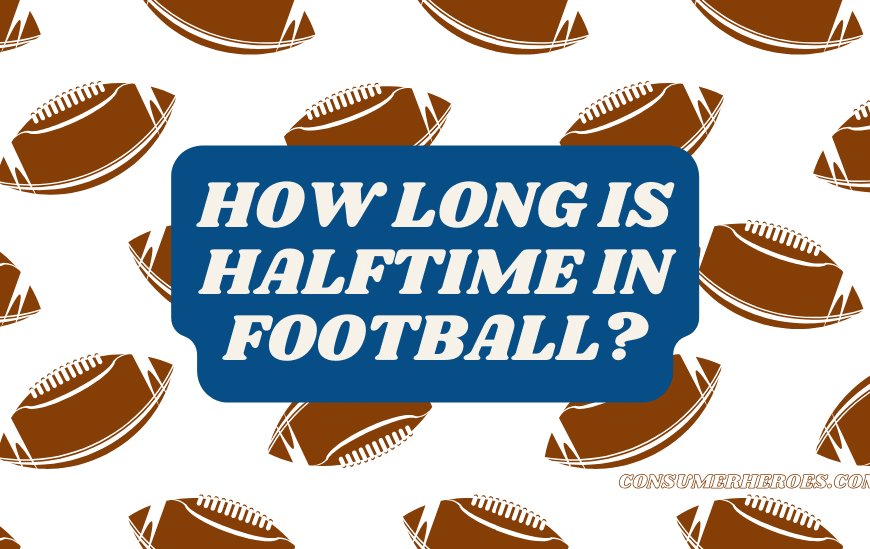Kicking a football is a fundamental skill that every football player must master. Whether it’s a penalty kick or a long-range shot, knowing how to kick a football properly can make all the difference in a game. However, many players struggle with this skill, and it can take years of practice to perfect.
To kick a football properly, there are several key factors to consider. First, the player must have good balance and positioning. This means standing with feet shoulder-width apart, with the non-kicking foot slightly behind the ball. The player should also keep their head down and eyes on the ball throughout the kick. Second, the player must use the correct technique, striking the ball with the laces of the foot and following through with the kicking leg. Finally, the player must generate enough power to get the ball where they want it to go.
In this article, we will explore the basics of how to kick a football, including the proper technique, tips for generating power, and common mistakes to avoid. Whether you’re a beginner or an experienced player looking to improve your skills, this guide will provide you with the knowledge and confidence you need to become a better football player.
Understanding Football Basics
To kick a football properly, one must first understand the basics of the sport. Football is a team sport played on a rectangular field, with two teams of eleven players each. The objective of the game is to score more points than the opposing team by getting the ball into the opponent’s goal.
The game is divided into two halves, each lasting 45 minutes, with a 15-minute break in between. The team with the most points at the end of the game wins. If the game ends in a tie, additional time may be added, or a penalty shootout may be used to determine the winner.
The field is divided into two halves, with a center line and two goal lines at either end. The area in front of the goal is called the penalty box, and the area directly in front of the goal is the goal area. The ball must completely cross the goal line between the goal posts and under the crossbar to score a goal.
To move the ball up the field, players may pass, dribble, or shoot the ball. A player may not touch the ball with their hands or arms, except for the goalkeeper who is allowed to use their hands within their own penalty area. If a player commits a foul, the opposing team may be awarded a free kick or penalty kick.
Understanding these basic rules and concepts of football is essential to kicking a football properly. With this knowledge, one can begin to learn the proper technique and form for a successful kick.
Selecting the Right Football
When it comes to kicking a football, selecting the right ball is crucial. The type of ball used can affect the accuracy and distance of the kick. Here are a few things to consider when selecting the right football:
Size
The size of the football is important for both comfort and performance. The standard size for a football is size 5, which is suitable for players aged 12 and above. However, younger players may require a smaller size ball to ensure they can comfortably grip and control it.
Material
Football balls are made from a variety of materials, including leather, synthetic leather, and rubber. Leather balls are the most traditional and are often used in professional matches. Synthetic leather balls are more durable and often used for training purposes. Rubber balls are commonly used for indoor and recreational games.
Weight
The weight of the ball can also affect the accuracy and distance of the kick. A heavier ball will require more force to kick, resulting in a slower and shorter kick. A lighter ball will require less force, resulting in a faster and longer kick. The standard weight for a football is between 14 and 16 ounces.
Inflation
Proper inflation is important for the performance of the ball. Overinflated balls can be difficult to control and may result in a harder kick. Underinflated balls can be easier to control but may result in a less accurate kick. It’s important to check the inflation of the ball before each use and adjust as necessary.
By considering these factors, players can select the right football for their needs and improve their kicking performance.
Positioning Your Body
When it comes to kicking a football, the position of your body is crucial to achieving a powerful and accurate kick. Here are a few key tips to keep in mind when positioning your body:
- Stand behind the ball: Before you take your kick, make sure you are standing directly behind the ball. This will help you to line up your shot and ensure that you make contact with the center of the ball.
- Plant your non-kicking foot: As you approach the ball, plant your non-kicking foot next to the ball. This foot should be pointing towards your target and should be placed about a foot away from the ball.
- Position your kicking foot: Your kicking foot should be placed next to the ball, with your toes pointing towards your target. Make sure your foot is slightly behind the ball so that you can make contact with the center of the ball.
- Keep your body balanced: As you prepare to kick, make sure your body is balanced and your weight is evenly distributed between your two feet. This will help you to maintain control and accuracy as you make contact with the ball.
By following these tips and positioning your body correctly, you’ll be well on your way to mastering the art of kicking a football.
Approaching the Ball
Approaching the ball is a crucial aspect of kicking a football. A player’s approach to the ball can affect the accuracy, power, and direction of the kick. The following paragraphs will provide some tips on how to approach the ball correctly.
Firstly, the player should position themselves behind the ball, with their non-kicking foot placed next to the ball. The distance between the ball and the non-kicking foot will depend on the player’s preferred kicking technique. A shorter distance may be better for a more controlled kick, while a longer distance may be better for a more powerful kick.
Next, the player should take a few steps back, positioning themselves at an appropriate distance from the ball. The number of steps taken will depend on the player’s running speed and the distance they need to cover to reach the ball.
As the player approaches the ball, they should keep their eyes on the ball and focus on their technique. They should keep their head down and their body over the ball, ensuring that their weight is evenly distributed between both feet.
Before making contact with the ball, the player should take a deep breath and remain calm. They should then swing their kicking leg forward, making contact with the ball at the right moment. The player should aim to strike the ball with the laces of their boot, keeping their ankle locked and their toes pointed down.
In summary, approaching the ball correctly is essential for a successful football kick. Players should position themselves behind the ball, take a few steps back, keep their eyes on the ball, focus on their technique, remain calm, and strike the ball with the laces of their boot.
Kicking Technique
When it comes to kicking a football, technique is everything. A good kicking technique ensures power, accuracy, and consistency. Here are the three key sub-sections of kicking technique that every player should focus on:
Planting Your Foot
The first step in kicking a football is to plant your non-kicking foot beside the ball. This foot should be pointing towards the target. The distance between the ball and the foot should be about shoulder-width apart. This provides a stable base for the kick and helps with balance.
Striking the Ball
The next step is to strike the ball with the inside of your foot. The point of contact should be just above the ankle bone. This is the sweet spot that ensures a clean and powerful strike. The kicking foot should be kept relaxed and the ankle should be locked. This allows for maximum power and accuracy.
Following Through
Finally, it’s important to follow through after the kick. The kicking foot should continue forward after striking the ball, with the toes pointing towards the target. This helps to generate more power and ensures a clean strike. The non-kicking foot should also follow through, landing on the ground beside the ball.
By focusing on these three key sub-sections, any player can improve their kicking technique and become a more effective player on the field.
Practicing the Kick
To become a proficient kicker, practice is essential. Here are some tips to help improve your kicking technique:
1. Proper Form
Before you start practicing, make sure you have the proper form. Stand behind the ball with your non-kicking foot pointed towards the target. Place your kicking foot next to the ball and take a few steps back. Lean forward slightly and keep your eyes on the ball.
2. Start Slowly
Start by kicking the ball slowly to get a feel for the technique. Focus on keeping your foot straight and making contact with the ball’s center. Gradually increase the speed and power of your kicks as you become more comfortable.
3. Use Targets
Use targets to practice accuracy. Set up cones or other markers and aim for them with each kick. This will help you develop consistent aim and control over your kicks.
4. Practice Different Kicks
Practice different types of kicks, such as the instep kick, the sidefoot kick, and the curling kick. Each kick requires a slightly different technique, so practicing them all will help you become a well-rounded kicker.
5. Get Feedback
Have someone watch you kick and provide feedback. They can help you identify areas for improvement and give you tips on how to correct any issues with your form or technique.
By following these tips, you can develop a solid foundation of kicking technique and gradually improve your skills over time.
Common Mistakes to Avoid
When it comes to kicking a football, there are a number of common mistakes that players should avoid. By being aware of these mistakes, players can improve their form and accuracy, and avoid injury.
One of the most common mistakes is not following through with the kick. Many players stop their leg as soon as they make contact with the ball, which can cause the ball to go off course or not go as far as intended. To avoid this mistake, players should follow through with their kick, allowing their leg to continue forward after making contact with the ball.
Another mistake is not keeping the head down during the kick. When players look up too soon, they can lose their balance and accuracy, causing the ball to go off course. To avoid this mistake, players should keep their head down until after the kick is complete.
A third mistake is not using the proper part of the foot to kick the ball. Many players try to kick the ball with their toes, which can cause injury and reduce accuracy. Instead, players should use the instep of their foot to make contact with the ball, which provides greater control and accuracy.
Finally, players should avoid leaning back too far during the kick. When players lean back, they lose balance and power, causing the ball to go off course or not go as far as intended. To avoid this mistake, players should keep their weight over the ball and maintain good posture throughout the kick.
Improving Your Kicking Skills
To become a better football kicker, it’s essential to practice consistently. Here are some tips to help improve your kicking skills:
1. Focus on Proper Form
It’s important to focus on proper form when kicking a football. Start by positioning the ball correctly and taking a few steps back. Plant your non-kicking foot next to the ball and keep your head down as you approach the ball. Swing your kicking leg through the ball, keeping your ankle locked and toes pointed down. Finally, follow through with your kicking leg, landing on your kicking foot.
2. Practice Your Timing
Timing is crucial when it comes to kicking a football. To improve your timing, practice kicking the ball at different speeds and distances. This will help you get a feel for how much power you need to put behind the ball and when to make contact with it.
3. Strengthen Your Leg Muscles
Strong leg muscles are essential for kicking a football with power and accuracy. Incorporate exercises like squats, lunges, and calf raises into your workout routine to build strength in your legs.
4. Experiment with Different Kicking Styles
There are different kicking styles that you can try to see what works best for you. Some kickers prefer to approach the ball straight on, while others prefer to approach it from an angle. Experiment with different styles to find what feels most comfortable and effective for you.
5. Get Feedback from Others
Getting feedback from others can be incredibly helpful when it comes to improving your kicking skills. Ask a coach or experienced kicker to watch you and provide feedback on your form and technique. This can help you identify areas where you need to improve and make adjustments to your kicking style.
Conclusion
In conclusion, kicking a football is a skill that requires practice and dedication to master. The key to a successful kick is proper technique, which involves the correct positioning of the body and the foot.
It is important to remember that each player has their own unique style and approach to kicking a football. While there are general guidelines that can be followed, players should experiment with different techniques and find what works best for them.
Additionally, it is important to consider the conditions in which the kick will be made, such as wind direction and field conditions. These factors can have a significant impact on the trajectory and distance of the kick.
Finally, it is important to maintain a positive mindset and stay focused on the task at hand. With practice and determination, anyone can become a skilled football kicker.







